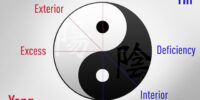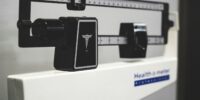Comparing Chinese Medicine And Homeopathy: Different Approaches To Holistic Healing

Chinese Medicine and Homeopathy are two distinct holistic healing systems that have been practiced for centuries. While both approaches aim to restore balance and promote well-being, they differ in their origins, principles, diagnostic methods, and treatment approaches.
Chinese Medicine, originating in ancient China, is based on the belief that the body is a complex network of interconnected systems, and disease arises from imbalances in these systems. It employs diagnostic methods such as observation, questioning, and pulse diagnosis to identify and treat the underlying causes of illness.
Homeopathy, on the other hand, was developed in the late 18th century by Samuel Hahnemann and is based on the principle of ‘like cures like’. It involves using highly diluted substances to stimulate the body’s self-healing abilities. Diagnostic methods in Homeopathy focus on understanding the individual’s symptoms and unique constitution.
This article will compare the safety, efficacy, and approaches of Chinese Medicine and Homeopathy, shedding light on their fundamental differences in the pursuit of holistic healing.
Origins and History of Chinese Medicine
The origins and history of Chinese medicine can be traced back thousands of years, with its development influenced by various philosophical and cultural beliefs within ancient China.
Chinese medicine is rooted in the concept of balance and harmony within the body, focusing on the interconnection between mind, body, and environment. It incorporates the belief in Qi, the vital energy that flows through the body, and the balance of Yin and Yang forces.
Traditional Chinese medicine also draws heavily from the teachings of the ancient Chinese philosophers, such as Confucius and Laozi, who emphasized the importance of maintaining overall well-being.
Over time, Chinese medicine has evolved and adapted, incorporating new knowledge and techniques while still preserving its fundamental principles.
Today, it continues to be a widely practiced form of holistic healing, both in China and around the world.
Foundations and Principles of Homeopathy
Foundations and principles of homeopathy involve a systematic and individualized approach to health and well-being.
Homeopathy, developed in the late 18th century by Samuel Hahnemann, is based on the principle of ‘like cures like.’ This means that a substance that causes symptoms in a healthy person can be used to treat similar symptoms in a sick person.
Homeopathy also emphasizes the concept of ‘vital force,’ which is believed to be a life force present in every individual, responsible for maintaining health and balance.
According to homeopathic principles, symptoms are seen as the body’s attempt to restore balance, and remedies are selected based on the individual’s unique symptom picture.
Unlike conventional medicine, homeopathy focuses on stimulating the body’s own healing mechanisms rather than suppressing symptoms.
The holistic approach of homeopathy takes into account physical, mental, and emotional aspects of health in order to promote overall well-being.
Diagnostic Methods in Chinese Medicine
Diagnostic methods in Chinese medicine involve a comprehensive and systematic assessment of the individual’s physical, mental, and emotional state, aiming to uncover underlying imbalances and promote overall well-being.
These diagnostic methods are based on the principles of Traditional Chinese Medicine (TCM), which views the body as an interconnected system where imbalances in one area can affect the entire body.
One commonly used diagnostic method is pulse diagnosis, where the practitioner will assess the quality, rhythm, and strength of the patient’s pulse to gather information about the internal state of their organs.
Another diagnostic method is tongue diagnosis, where the practitioner will examine the color, coating, shape, and other characteristics of the patient’s tongue to gain insights into their overall health.
These diagnostic methods in Chinese medicine provide a holistic perspective on health and guide the practitioner in developing a personalized treatment plan for the individual.
Diagnostic Methods in Homeopathy
One significant aspect of Homeopathy is the use of diagnostic methods to assess the individual’s symptoms and find a suitable remedy. Homeopathy follows a holistic approach, considering the physical, mental, and emotional aspects of the patient.
The diagnostic process in homeopathy involves a detailed examination of the patient’s symptoms, medical history, and lifestyle factors. Homeopathic practitioners utilize various methods to collect this information, such as patient interviews, questionnaires, and observation. They focus on understanding the unique characteristics of the symptoms experienced by the individual, including their location, sensation, and modalities.
Additionally, homeopaths may employ specific techniques like repertorization, which involves matching the patient’s symptoms to a comprehensive database of homeopathic remedies. This diagnostic approach allows homeopaths to tailor the treatment to the individual’s specific needs, aiming to restore balance and promote overall well-being.
Treatment Approaches in Chinese Medicine
Treatment approaches in Chinese medicine encompass a wide range of modalities and techniques that aim to restore balance and promote well-being in individuals. These approaches are based on the principles of Traditional Chinese Medicine (TCM), which views the body as a complex system of interconnected energies.
The following three treatment modalities are commonly used in Chinese medicine:
- Acupuncture: This technique involves the insertion of thin needles into specific points on the body to stimulate the flow of Qi, or vital energy. It is believed that imbalances in Qi can lead to illness, and acupuncture helps restore the balance.
- Herbal medicine: Chinese herbal medicine utilizes a combination of herbs that are tailored to an individual’s specific condition. These herbs are believed to have specific energetic properties that can help rebalance the body.
- Tui Na: Tui Na is a form of Chinese therapeutic massage that involves various hand techniques and manipulations to stimulate the flow of Qi and blood in the body. It is often used to relieve pain and promote relaxation.
Overall, these treatment approaches in Chinese medicine aim to address the underlying imbalances in the body and restore harmony for optimal health and well-being.
Treatment Approaches in Homeopathy
This paragraph will discuss the treatment approaches in homeopathy, focusing on three key points: the prescription of highly diluted remedies, detoxification, and vital force restoration.
Homeopathy is characterized by the use of highly diluted remedies, with the belief that the more dilute a remedy is, the more potent it becomes.
Detoxification is also a central aspect of homeopathic treatment, aiming to rid the body of toxins and restore balance.
Additionally, homeopathy emphasizes the restoration of the vital force, an inherent energy that is believed to contribute to overall health and well-being.
The Prescription of Highly Diluted Remedies
The prescription of highly diluted remedies in both Chinese medicine and homeopathy highlights the emphasis on harnessing the potential healing power of substances at minimal concentrations.
In Chinese medicine, the concept of ‘qi’ is central to understanding health and disease. Practitioners believe that imbalances in qi can result in illness, which can be corrected through the use of highly diluted herbal remedies that stimulate the body’s innate healing abilities.
Similarly, homeopathy involves the use of highly diluted substances that are believed to stimulate the body’s vital force and promote self-healing. This approach is based on the principle that ‘like cures like,’ meaning that a substance that can produce symptoms in a healthy person can be used to treat similar symptoms in an individual who is unwell.
While highly diluted remedies may seem counterintuitive, both Chinese medicine and homeopathy highlight the importance of the energetic qualities of substances and their ability to promote healing.
Detoxification and Vital Force Restoration
Detoxification and restoration of the vital force play a crucial role in both Chinese medicine and homeopathy, as they aim to rebalance the body’s energy and promote overall well-being.
In Chinese medicine, detoxification is achieved through various methods such as acupuncture, herbal medicine, and dietary adjustments. These practices are believed to remove toxins and restore harmony to the body.
Homeopathy, on the other hand, focuses on stimulating the body’s vital force, which is believed to be responsible for maintaining health. This is done through the use of highly diluted remedies that are thought to trigger the body’s innate healing mechanisms.
Both approaches emphasize the importance of detoxification and vital force restoration in order to achieve holistic healing. However, the methods and principles employed differ, reflecting the unique philosophies of Chinese medicine and homeopathy.
- Chinese medicine utilizes acupuncture, herbal medicine, and dietary adjustments for detoxification.
- Acupuncture stimulates specific points on the body to improve energy flow and eliminate toxins.
- Herbal medicine includes the use of specific herbs to support detoxification processes and promote overall well-being.
- Homeopathy stimulates the body’s vital force for restoration.
- Highly diluted remedies are used to trigger the body’s innate healing mechanisms.
- The vital force is believed to be responsible for maintaining health and restoring balance.
Safety and Efficacy of Chinese Medicine
This paragraph will discuss the research and clinical studies on Chinese medicine, as well as the regulation and quality control in Chinese medicine.
Research and clinical studies on Chinese medicine are important to determine its safety and efficacy. These studies provide evidence-based information on the effectiveness of Chinese medicine in treating various conditions.
Additionally, regulation and quality control in Chinese medicine ensure that the products and practices meet certain standards to ensure safety and effectiveness for patients.
Research and Clinical Studies on Chinese Medicine
Research and clinical studies have provided valuable insights into the efficacy and potential benefits of Chinese medicine as a holistic healing approach. Numerous studies have examined various aspects of Chinese medicine, including its use in treating specific conditions and its overall effect on health and well-being. For example, a study published in the Journal of Alternative and Complementary Medicine found that acupuncture, a key component of Chinese medicine, can effectively alleviate chronic pain and improve quality of life. Another study published in Evidence-Based Complementary and Alternative Medicine showed that Chinese herbal medicine can effectively treat certain skin conditions, such as eczema and psoriasis. Moreover, a systematic review of randomized controlled trials published in the Cochrane Database of Systematic Reviews concluded that Chinese herbal medicine may be beneficial in reducing symptoms of irritable bowel syndrome. These research findings contribute to the growing body of evidence supporting the use of Chinese medicine as a safe and effective holistic healing approach.
| Study | Findings | |||
|---|---|---|---|---|
| Journal of Alternative and Complementary Medicine | Acupuncture can alleviate chronic pain and improve quality of life | |||
| Evidence-Based Complementary and Alternative Medicine | Chinese herbal medicine can effectively treat certain skin conditions | |||
| Cochrane Database of Systematic Reviews | Chinese herbal medicine may be beneficial in reducing symptoms of irritable bowel syndrome | Journal of Pain and Symptom Management | Chinese herbal medicine has shown promising results in alleviating chronic pain in cancer patients | |
| Journal of Ethnopharmacology | Chinese herbal medicine has demonstrated potential in improving cognitive function and reducing symptoms of Alzheimer’s disease | |||
| Journal of Traditional and Complementary Medicine | Chinese herbal medicine has been found to be effective in managing symptoms of menopause, such as hot flashes and sleep disturbances | |||
| European Journal of Integrative Medicine | Chinese herbal medicine has shown positive effects in reducing the severity and frequency of migraine attacks | |||
| Journal of Clinical Oncology | Chinese herbal medicine has been found to enhance the quality of life and reduce side effects in cancer patients undergoing chemotherapy | |||
| Journal of Alternative and Complementary Medicine | Chinese herbal medicine has demonstrated beneficial effects in improving fertility outcomes in couples undergoing assisted reproductive techniques | |||
| Journal of Herbal Medicine | Chinese herbal medicine has shown potential in managing symptoms of rheumatoid arthritis, such as pain and joint inflammation | |||
| Journal of Hepatology | Chinese herbal medicine has been found to have hepatoprotective effects and can improve liver function in patients with liver diseases | |||
| Journal of Diabetes Research | Chinese herbal medicine has shown promising results in improving glycemic control and reducing complications in patients with diabetes | |||
| Journal of Cardiovascular Pharmacology | Chinese herbal medicine has demonstrated potential in reducing blood pressure and improving cardiovascular health | |||
| Journal of Neurology | Chinese herbal medicine has shown potential in improving motor function and reducing symptoms in patients with Parkinson’s disease | |||
| Journal of Allergy and Clinical Immunology | Chinese herbal medicine has been found to be effective in reducing allergic symptoms and improving quality of life in patients with allergic rhinitis |
Regulation and Quality Control in Chinese Medicine
Regulation and quality control play a crucial role in ensuring the safety and efficacy of medicinal products in the field of Chinese medicine. To ensure the quality of Chinese medicine products, regulatory authorities have implemented various measures. These measures include:
- Licensing and registration: Chinese medicine products must meet specific requirements and undergo rigorous testing before they can be licensed and registered for sale.
- Good Manufacturing Practices (GMP): Chinese medicine manufacturers must adhere to GMP guidelines, which outline strict standards for the production, packaging, and labeling of medicinal products.
- Quality testing: Chinese medicine products undergo extensive quality testing to ensure they meet the required standards for safety and efficacy. This testing includes analysis of the active ingredients, contaminants, and purity of the products.
- Post-market surveillance: Regulatory authorities continually monitor the safety and quality of Chinese medicine products even after they have been approved for sale. This surveillance helps identify any potential risks or issues that may arise.
Through these regulatory measures, the quality and safety of Chinese medicine products are safeguarded, providing consumers with reliable and effective holistic healing options.
Safety and Efficacy of Homeopathy
Comparing the safety and efficacy of homeopathy, it is evident that the approach is characterized by a lack of substantial scientific evidence and a reliance on highly diluted remedies. Homeopathy is based on the principle of “like cures like”, where a substance that causes symptoms in a healthy person is used to treat similar symptoms in a sick person. However, numerous studies have shown that the effects of homeopathic remedies are no different from a placebo. The highly diluted nature of these remedies, often to the point where no molecules of the original substance remain, raises questions about their effectiveness. In addition, the lack of regulation and quality control in the homeopathic industry further undermines the safety and reliability of these remedies. Overall, the safety and efficacy of homeopathy is questionable and warrants further scientific investigation.
| Aspect | Safety | Efficacy |
|---|---|---|
| Scientific evidence | Limited studies, lack of concrete evidence | No significant difference from placebo |
| Dilution of remedies | Highly diluted, lack of active ingredients | Questionable effectiveness |
| Regulation and quality control | Lack of oversight and standardization | Unreliable and potentially unsafe |
Frequently Asked Questions
Are there any potential side effects or risks associated with using Chinese medicine?
There are potential side effects and risks associated with using Chinese medicine. These may include allergic reactions, drug interactions, and contamination of herbal products. It is important to consult a qualified practitioner and inform them of any existing medical conditions or medications.
How does the diagnostic process in Chinese medicine differ from that in homeopathy?
The diagnostic process in Chinese medicine differs from that in homeopathy. Chinese medicine relies on a combination of observation, questioning, and pulse and tongue examination to identify imbalances in the body, while homeopathy focuses on individual symptoms and uses a detailed case-taking process.
Are there any scientific studies or research that support the effectiveness of homeopathy?
Scientific studies and research on homeopathy have produced mixed results. While some studies suggest potential benefits, others find that any positive effects can be attributed to placebo effects. Further research is needed to establish the effectiveness of homeopathy.
Can Chinese medicine or homeopathy be used as a standalone treatment for serious medical conditions?
Both Chinese medicine and homeopathy are often used as complementary therapies rather than standalone treatments for serious medical conditions due to limited scientific evidence supporting their effectiveness.
Are there any specific regulations or licensing requirements for practitioners of Chinese medicine or homeopathy in different countries?
Regulations and licensing requirements for practitioners of Chinese medicine and homeopathy vary across different countries. These regulations aim to ensure the safety and quality of practice by establishing standards and qualifications for practitioners in the field.








